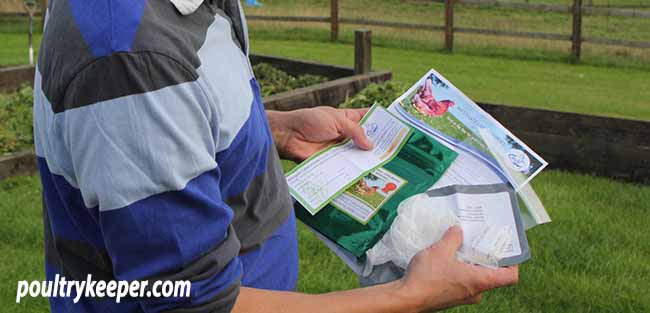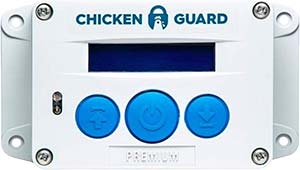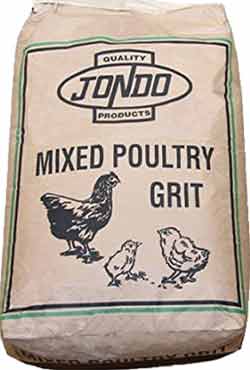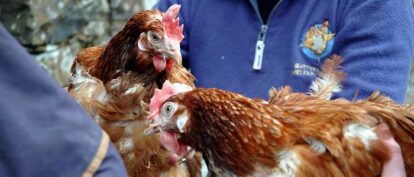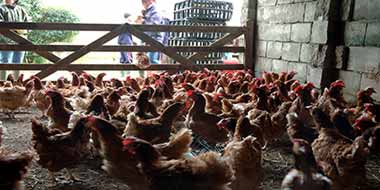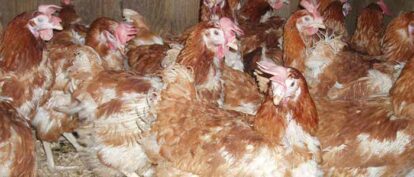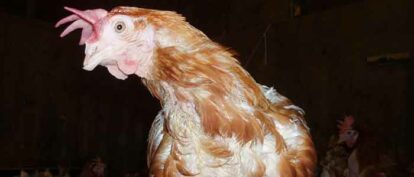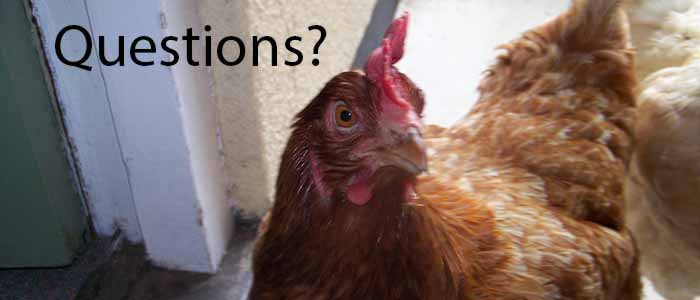
If you are new to chickens or have never adopted ex-battery hens before, then these Rehoming Battery Hens Frequently Asked Questions are for you! We will cover the coop and run’s size, what to buy before you get them, what feed these special ladies will need, and some other general care questions new owners have.
How difficult is it to look after ex-battery hens?
Ex-Battery hens require a little bit of extra care and attention during the initial couple of months that you get them until they have adapted to their new life and routine.
At first, they may not put themselves to bed (but this is often the case with new chickens anyway) and may not lay their eggs in the nesting boxes, but with a little encouragement during the first couple of months, they will soon learn the routine.
Once your ex-battery hens have settled in, they shouldn’t be any more trouble than regular chickens. In many ways, they are easier to look after than some fancier breeds of chickens.
You will need to make sure you have the time to provide them with some fresh water and top up their food every day. At dusk, you will need to lock them up safe from foxes. Automatic chicken doors are a very worthwhile investment if you aren’t always at home to do this. Remember, during the winter, it can be dark at about 4 pm!
Like any animal, keeping chickens gives you an extra tie if you want to go away. You will need to make suitable arrangements to make sure your hens are looked after properly when you are on holiday, but neighbours and friends are usually willing, especially if they get to take home some eggs!
What condition will the hens be in when I get them?
It varies: Commercial laying hens are all replaced by 18 months old. Rescue organisations will take free-range, barn or enriched colony cage hens. The condition of the hens can be quite different between systems.
Some battery hens can be poorly feathered when they come out from the farms; a few can be very sparsely feathered and can look almost ‘oven-ready,’ but the average hen will have just a few bare patches.
Hens will usually feather up within a few months and will then look like ‘normal’ hens. They will be pretty exhausted when you get them (as will the rescue co-ordinators after a pretty gruelling day getting the hens out and rehoming them).
Hens that have been in cages are usually unfit since they haven’t been very active.
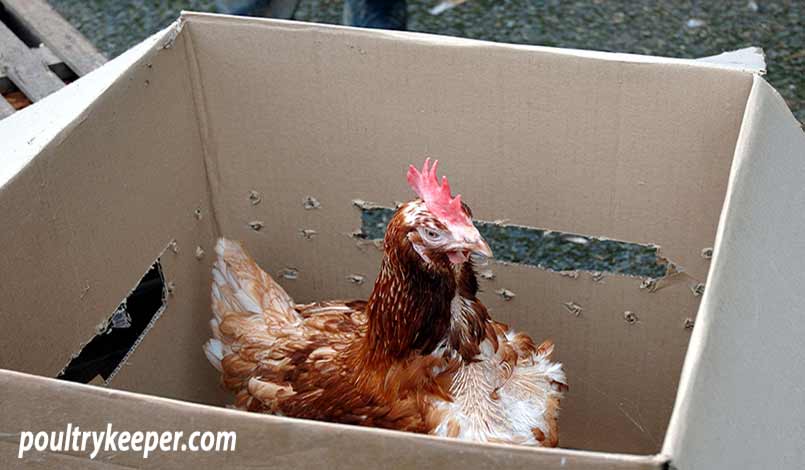
How easily do battery hens adapt to a free-range life?
It is difficult for a battery hen when she comes out of an enriched cage, even though it is for a much better life. Hens are creatures of habit, and anything different can cause them to be stressed and cautious.
There are many things they will not understand at first, like being able to scratch the ground beneath their feet. This is one of the most natural behaviours for a hen, though, and it will soon return.
It is one of the most amazing sights, seeing hens taking their first few steps out of their house. Within a few days, they will be moving around, exploring their new home and enjoying a free-range life.
After a few weeks, their new feathers will start to grow, and within a couple of months, they will soon look like ‘normal’ hens again.
How many hens should I rehome?
Most battery hen rehoming organisations will ask you to keep a minimum of three chickens. The main reason for this is that hens are social creatures that need company, living in small flocks. If you lose one, you will still have two, so they have the company of their own kind.
Some ex-battery hens have had a hard life, and there is an increased risk of losing one before they have had a chance to recover and settle in. For this reason, I would recommend you consider rehoming a minimum of four hens.
What size coop and run do I need for ex-battery hens?
When you buy a chicken house, the manufacturer will usually state how many chickens they can house. Some manufacturers will always go for a higher number than is comfortable, so it’s always a good idea to stock your house with fewer hens than the chicken house supplier’s suggestion.
The main requirement is sufficient perch space for the hens because normally, they will be outside during the day. You need to allow 30cm of perch space per hen to make it comfortable for them.
It is good to have enough space in the chicken house to hang a feeder if you don’t have a covered run since you will want to keep their food dry and away from the wild birds who will soon empty an open feeder left outdoors.
Battery hens are used to sleeping on the floor. You can remove high perches in their house for the first few weeks. If they do climb up on a perch, they can damage their bones when jumping off, so exercise caution with high perches until they are settled in.
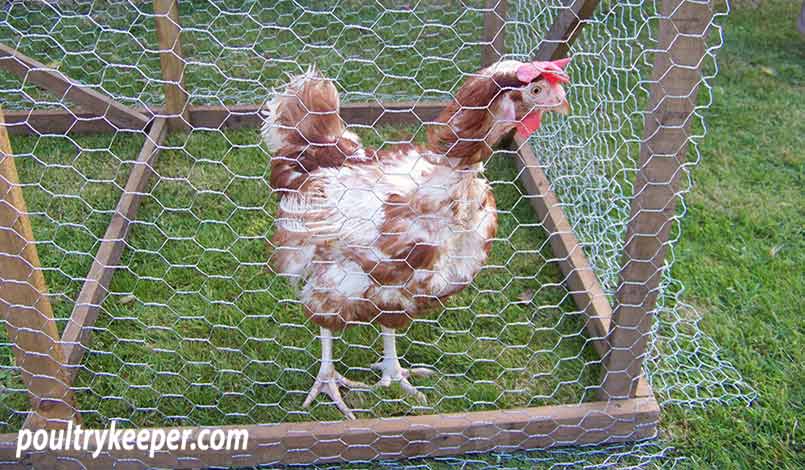
Chicken runs come in many sizes, but the more space you give the hens, the better. If you have a tiny run, they will get bored quickly and soon pick up bad vices like feather pecking.
There is a guide to chicken houses that goes through the details of what you will need to look for.
Security
In the UK, Foxes are the number one predator to protect against, but Badgers will also take chickens from time to time. It is important to ensure your hens are locked up at dusk inside their house.
If you can’t always be at home, there are some chicken house door closers available. My favourite is the Chicken Guard Automatic Door which I have found reliable, as you will see from my review if you follow the link.
Automatic
Door Opener
& Closer
The most likely time for predators like foxes to visit is at night, so your chickens must be locked up safely from dusk until dawn.
If you are worried about being at home in time to lock up your chickens, then an automatic chicken house door opener/closer might be the answer.
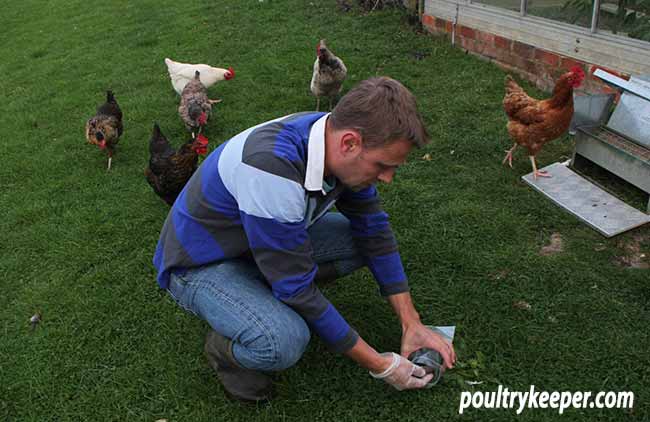
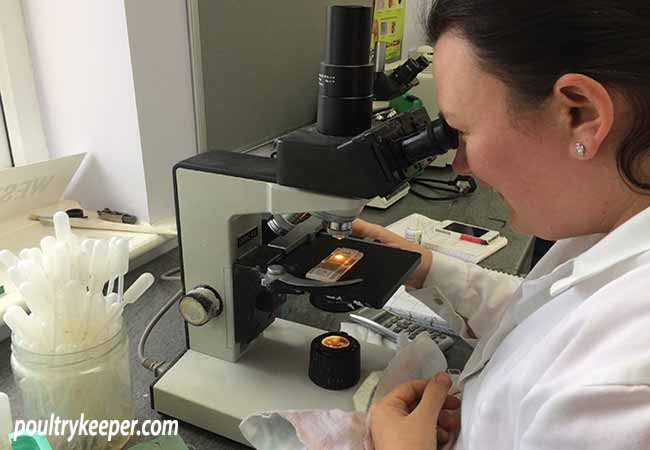
What do I need to buy before I get my ex-batts?
Food and water containers
Some containers have plastic feet that keep them off the ground, which are useful for this purpose.
Layers crumble/mash
Hang these inside their house at first so that they are close to the hens. They are not used to going far for their food or water, so make sure they are within easy reach of your new girls.
Some water containers come with a handle that allows them to be hung from above (hanging basket chains with a nice big hook on the end are useful for this) but remember you may not have somewhere to hang them once they eventually move outside.
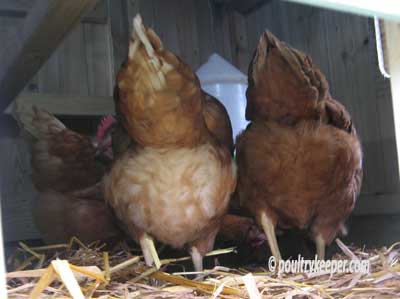
Battery hens are fed layers crumble, not layers pellets. In time, you can slowly change their diet to layers pellets if you wish, but wait until they have settled in first.
Poultry grit
Chickens don’t have teeth, of course, but they do have a gizzard that grinds their food down using insoluble/flint grit. Most free-range hens will pick up enough grit from grazing, but it is always wise to provide grit just in case.
Soluble grit (Oystershell) can be provided mixed with insoluble (flint) grit. This provides calcium for the hens to produce strong eggshells.
Commercial battery hens often have brittle bones since the calcium from their bones is taken to produce eggshells. Most commercial feeds these days provide sufficient calcium, but it is good to provide Oystershell grit ad-lib as well. A hen can then take it if she needs it.
Jondo Mixed Poultry Grit
Probably one of the most popular brands of mixed poultry grit in the UK comes from JONDO.
John J. Doe & Son is a third-generation family business that has been making grit at their site, 6 miles west of Lincoln, since 1942.
A 25Kg bag may seem like a lot, but keep in mind that grit is heavy, so this is a good size for most small backyard flocks.
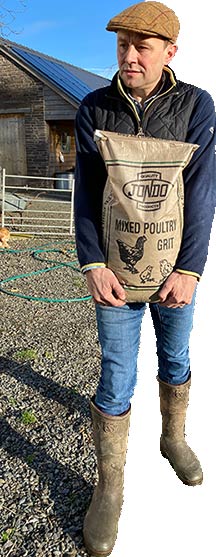
A vitamin drink/supplement
Ex- battery hens, will benefit from a vitamin supplement added to their drinking water or food to get back into condition. There are many different supplements available on the market, some more expensive than others. Whatever you chose to buy, you will not waste it since birds can benefit from these vitamin supplements during the annual moult or the colder winter months when greens are in short supply. Most of these come as a liquid diluted down and added to drinking water, but a few come as a powder and can be added to drinking water or a wet layers crumble mixture.
Apple Cider Vinegar
Apple Cider Vinegar is perfect for chickens in many ways, but the best thing is scientific tests have shown it actually helps them to cope with stress and changes to their environment. I always give my ex-batts Apple Cider Vinegar and believe it really helps them.
What should I feed my ex-batts?
Battery hens are used to being fed dry layers mash. Changes are stressful for chickens, and ex-battery hens have enough to deal with coming out of their cages into a completely new environment. Hence, you need to continue feeding them layers mash until they have settled in for a few weeks, after which you can gradually change their feed over to pellets if you prefer.
To digest their food, chickens must always have a clean/fresh water supply at all times. During hot weather, this is particularly important when they will drink more.
Chickens do not sweat and can only lose heat from their bodies by panting and drinking water that is cooler than their body’s temperature; for this reason, you should keep their water container in the shade during scorching weather.
Chickens also love most fresh green vegetables and fruit. Corn on the cob, cabbage, broccoli, apple, strawberries, grapes, tomatoes are all appreciated, and you can hang some of these in their run for them to enjoy. There is in-depth information in this guide to feeding chickens which should help you understand how to feed chickens.
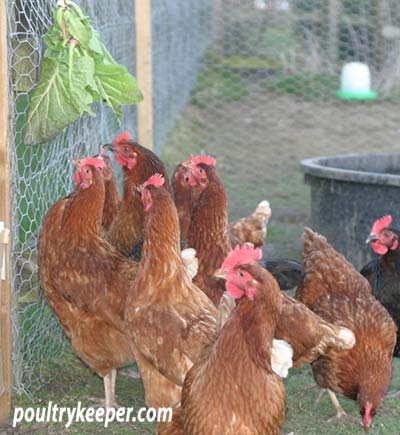
Dried cat food
Yes, that’s right – cat food. Feathers are 80% protein. Chickens growing new feathers benefit from the animal protein in cat food, so crushing up some dried cat food is an old poultry keepers trick used to help chickens through their moult. Do not use dog food because the protein in dog food is derived from cereals.
Will ex-battery hens lay lots of eggs?
Battery hens are the result of many years of breeding and selection. They have been bred to lay the largest possible number of eggs in their first couple of years of their life. If you want ex-battery hens solely for eggs, then they aren’t really for you. Ex-battery hens should still have a large number of eggs to lay for you but keep in mind that commercially they are ‘spent’ hens and like any chicken will lay less and less every year, sometimes with a thinner egg-shell as they get to 3 or 4 years old. A very small number of hens that are rescued do not lay although most will usually start laying very quickly. Like all hens, expect them to lay most of their eggs during the spring and summer months and expect them to stop laying when they go into moult in the late autumn and when the daylight hours are reduced over the winter.
Where can I buy ex-battery hens?
There are several charities/rescue organisations in the U.K. that rehome ex-battery hens. Most of these require you to register with them so that they can allocate some hens to you from their next rescue in that area. They usually do not charge a set fee for hens, but they will ask you for a donation to help support their work and running costs. We would encourage you not to go straight to the farmer. The charities will check birds over for you and will often trim overgrown nails or beaks before giving your birds to you. You can find a list of the rehoming charities at the bottom of my article: Ex-Battery Hens For Sale
Do I need to register with DEFRA?
You do not need to register with DEFRA in the UK unless you keep 50 or more poultry. When you count your birds, you must remember ‘poultry’ doesn’t just mean chickens; you must include ducks, geese, guinea fowl, quail and so on. There is more information here on the laws that concern chicken keepers.
Finally… Once Ex Bats have settled in, they are just like other chickens and can be treated as such. Many articles can be found in the keeping chickens section that can help you look after your girls, and there are some more specific articles in the Rehoming Battery Hens category.
Most of all, though, have some fun keeping them!

